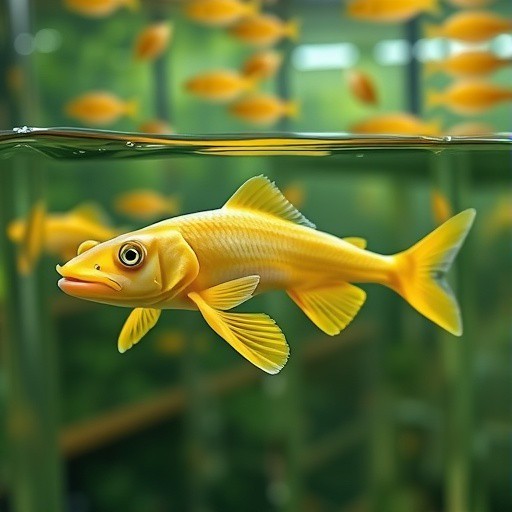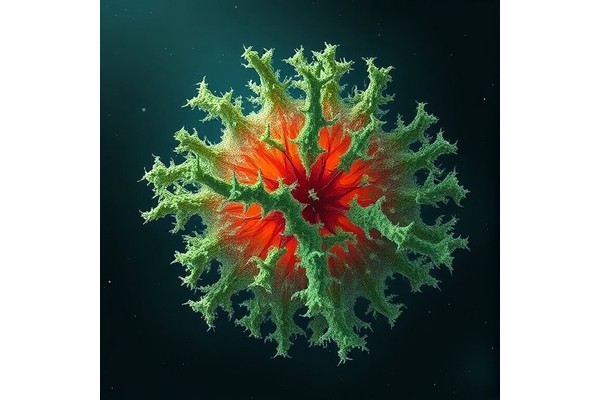Decoding the Genetic Blueprint of Yellow Catfish to Advance Sustainable Aquaculture
Decoding the Genetic Blueprint of Yellow Catfish to Advance Sustainable Aquaculture

Researchers used ten microsatellite markers to evaluate the genetic structure of six populations from the Yangtze, Huaihe, and Ussuri River basins. The northern Ussuri population stood out for its lower diversity and significant genetic separation from southern populations.
Yellow catfish (Pelteobagrus fulvidraco) is a widely farmed freshwater fish species in China, prized for its high nutritional value and boneless flesh. Annual production exceeds 600,000 tons, making it a key species in China’s aquaculture sector. However, challenges such as slow growth rates and marked sexual dimorphism—where males grow faster than females—affect its economic value. Additionally, years of selective breeding and habitat fragmentation have raised concerns about declining genetic diversity. Genetic variation is essential for adaptability and resilience in changing environments. Due to these challenges, it is crucial to assess and preserve genetic diversity across yellow catfish populations to inform scientific breeding and sustainable aquaculture.
A study (DOI: 10.48130/animadv-0024-0010) published in Animal Advances on 23 January 2025 by Shiyong Zhang’s team, Freshwater Fisheries Research Institute of Jiangsu Province, offers essential guidance for conserving germplasm resources and improving breeding strategies, particularly by incorporating genetically distinct populations into selective breeding programs.
To evaluate the genetic diversity and population structure of yellow catfish, researchers employed ten highly polymorphic microsatellite (SSR) markers across six geographically distinct populations in China. These markers, selected from different chromosomes to avoid linkage disequilibrium, allowed for the amplification of 201 alleles, revealing significant differences in genetic diversity among the populations. The average number of alleles ranged from 9.0 to 11.5 per population, with the Ussuri River population (WSLR) showing the lowest allele count (90) and Hongze Lake (HZHL) the highest (115). Correspondingly, expected heterozygosity (He) ranged from 0.588 to 0.727, and observed heterozygosity (Ho) from 0.614 to 0.667, with WSLR consistently exhibiting the lowest genetic diversity across parameters such as PIC, Shannon’s index, and effective allele number. Hardy-Weinberg equilibrium analysis revealed significant deviations at multiple loci across populations, especially at PF448 and PF05. Analysis of molecular variance (AMOVA) indicated that 91% of genetic variation occurred within individuals, while only 3% was attributed to differences between populations. Genetic differentiation indices (Fst) ranged from 0.014 to 0.069, suggesting low to moderate differentiation, with the WSLR population showing the most distinct genetic profile. Clustering analyses—including phylogenetic trees, PCoA, and STRUCTURE analysis—clearly separated the northern WSLR population from the five southern populations. Gene flow analysis supported this structure, with high levels of exchange among southern populations but reduced flow with WSLR. These results highlight the influence of geographic isolation on genetic divergence and suggest that the WSLR population, despite its lower diversity, could serve as a valuable genetic resource for breeding programs aiming to enhance adaptability and resilience in yellow catfish aquaculture.
These findings provide a scientific framework for the conservation of yellow catfish germplasm and the design of targeted breeding strategies. The identification of high-diversity populations such as HZHL supports their use as foundational stocks for genetic improvement. Conversely, the genetic uniqueness of the WSLR population offers an opportunity to broaden the genetic base of farmed stocks by introducing potentially adaptive traits. Integrating these insights into breeding programs could improve growth performance, stress resistance, and overall production efficiency, addressing key bottlenecks in yellow catfish aquaculture. Furthermore, this study reinforces the need to maintain natural genetic variation to support long-term sustainability in aquaculture systems.
###
References
DOI
Original Source URL
Funding information
The study was funded by the Important New Varieties Selection Project of Jiangsu Province (PZCZ201742) and the China Agriculture Research System of MOF and MARA (CARS-46).
About Animal Advances
Animal Advances is an open-access journal which published by Maximum Academic Press in partnership with Nanjing Agricultural University. The journal is dedicated to delivering cutting-edge discoveries and progress in animal sciences to a diverse audience, encompassing scholars, academicians, and practitioners in the industry.
Journal
Animal Advances
DOI
10.48130/animadv-0024-0010
Method of Research
Experimental study
Subject of Research
Not applicable
Article Title
Genetic diversity and population structure of Pelteobagrus fulvidraco in China based on microsatellite markers
Article Publication Date
23-Jan-2025
COI Statement
The authors declare that they have no competing interests.
Phoebe Wang
Maximum Academic Press
phoebe.w@maxapress.com
Journal
Animal Advances
DOI
10.48130/animadv-0024-0010
Method of Research
Experimental study
Subject of Research
Not applicable
Article Title
Genetic diversity and population structure of Pelteobagrus fulvidraco in China based on microsatellite markers
Article Publication Date
23-Jan-2025
COI Statement
The authors declare that they have no competing interests.
Keywords
bu içeriği en az 2000 kelime olacak şekilde ve alt başlıklar ve madde içermiyecek şekilde ünlü bir science magazine için İngilizce olarak yeniden yaz. Teknik açıklamalar içersin ve viral olacak şekilde İngilizce yaz. Haber dışında başka bir şey içermesin. Haber içerisinde en az 12 paragraf ve her bir paragrafta da en az 50 kelime olsun. Cevapta sadece haber olsun. Ayrıca haberi yazdıktan sonra içerikten yararlanarak aşağıdaki başlıkların bilgisi var ise haberin altında doldur. Eğer yoksa bilgisi ilgili kısmı yazma.:
Subject of Research:
Article Title:
News Publication Date:
Web References:
References:
Image Credits:
Keywords
The Science Behind Sports Arenas: Politics, Public Funding, and Fan Engagement
Next PostHow AI-Driven Personalized Pricing Could Fall Short for Consumers
Developing Medical AI Inclusive of Transgender People: A Collaborative Study by UPF, BSC, URV, and PRISMA







